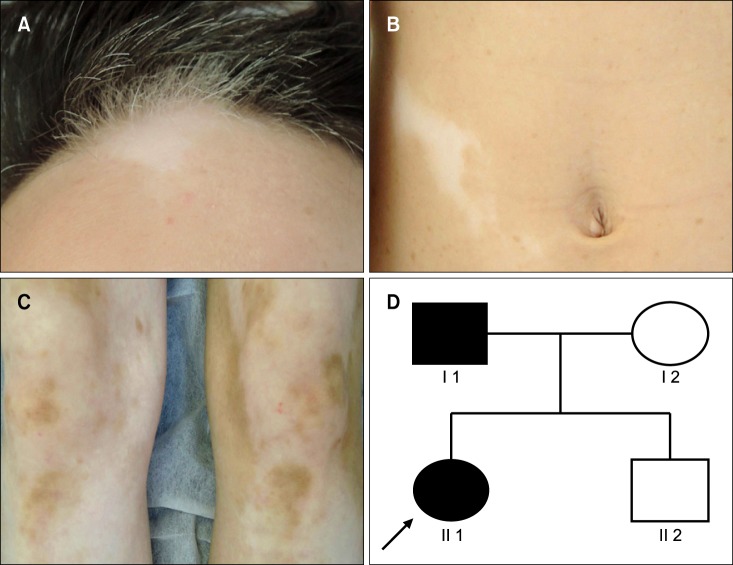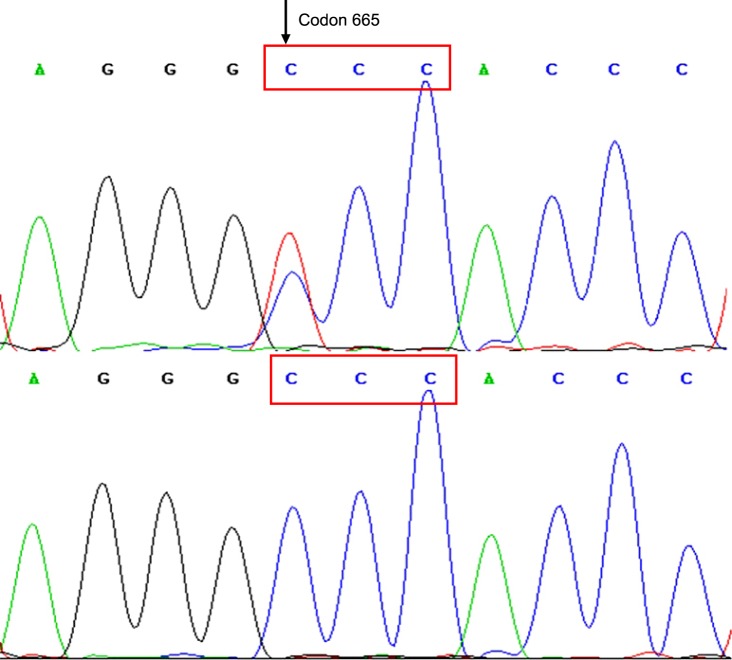Ann Dermatol.
2017 Dec;29(6):801-803. 10.5021/ad.2017.29.6.801.
Novel KIT Missense Mutation P665S in a Chinese Piebaldism Family
- Affiliations
-
- 1Department of Dermatology, Shenzhen Hospital of Southern Medical University, Shenzhen, China. liangdoctor@163.com
- 2Department of Histology and Embryology, Institute of Neuroscience, Wenzhou Medical University, Wenzhou, China.
- KMID: 2395195
- DOI: http://doi.org/10.5021/ad.2017.29.6.801
Abstract
- No abstract available.
Figure
Reference
-
1. Spritz RA, Holmes SA, Ramesar R, Greenberg J, Curtis D, Beighton P. Mutations of the KIT (mast/stem cell growth factor receptor) proto-oncogene account for a continuous range of phenotypes in human piebaldism. Am J Hum Genet. 1992; 51:1058–1065. PMID: 1384325.2. Oiso N, Fukai K, Kawada A, Suzuki T. Piebaldism. J Dermatol. 2013; 40:330–335. PMID: 22670867.
Article3. Lennartsson J, Rönnstrand L. Stem cell factor receptor/c-Kit: from basic science to clinical implications. Physiol Rev. 2012; 92:1619–1649. PMID: 23073628.
Article
- Full Text Links
- Actions
-
Cited
- CITED
-
- Close
- Share
- Similar articles
-
- A Missense Mutation in TRPS1 in a Family with Trichorhinophalangeal Syndrome Type III Accompanied by Ankylosing Spondylitis
- A Novel Mutation in the XLRS1 Gene in a Korean Family with X-linked Retinoschisis
- Four Generations of Piebaldism
- Piebaldism Associated with Café-au-lait Macules and Intertriginous Freckling: A Case Report and Review of the Literature
- Gastrointestinal stromal tumor with KIT mutation in neurofibromatosis type 1



